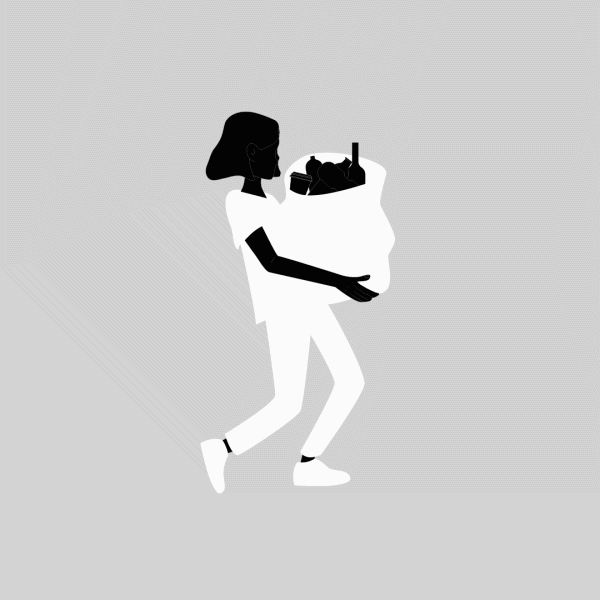PLASTIC PACKAGING, ITS RECYCLING PROCESS AND ZERO WASTE
We should reuse the resources available to us as much as we can, avoid buying produce wrapped in plastic, use fabric bags when shopping and consider leading a zero-waste life. Most importantly, be mindful of the pollution caused by the ever-growing consumerism culture and thrive to not be a part of it.

Illustration: Argjira Kukaj
The year was 1941 and DuPont scientists had just invented polyethylene terephthalate or PET. They were aiming to create synthetic fibers to be used as polyester. Today, PET is all over the place; from the moment you wake up until you fall asleep. You brush your teeth with a PET toothbrush; you take a shower with shampoo inside a PET bottle. You drink from a PET beverage bottle and you eat your meal which is packaged in PET. Nowadays, more and more self-aware people are going zero waste. Living while creating little to no amounts of waste entails the individual opting out of purchasing non-sustainable materials, like plastic, even for personal hygiene products; instead choosing multi-use, earth-friendly and cruelty free options.
“The conservation of all resources by means of responsible production, consumption, reuse, and recovery of products, packaging, and materials without burning and with no discharges to land, water, or air that threaten the environment or human health”, is how Zero Waste International Alliance defined the notion zero waste. Meaning that zero waste is a lifestyle where you are very aware of the state of the planet and actually do something to help.
Recycling would be a very usable solution to waste management, if it was appropriately done. Many say that the problem with this misuse of PET products, is not the large quantities they are produced in, but rather what is happening with them post usage. In official documents, they get recycled, but actually end up in the landfills of Asian and/or developing countries. China was the world’s largest garbage importer, with a main focus on waste from the USA, UK, EU and Japan.
Then in 2017 they announced a ban on 24 kinds of garbage from being imported into the mainland. It is believed this great change in policies was influenced by Jiuliang Wang’s documentary Plastic China. Wang’s film went viral before it was banned inside China’s territory.
There are many different methods of recycling. There is upcycling, the form of increasing the value of an item. It turns a used object into another useful object via recycling. Even houses have been constructed from bottles. Then there is chemical recycling, which makes it possible to use the same resources to make plastic containers multiple times. This happens by turning polymers into monomers.
Leading food and drinks companies are pledging to either increase the amount of recycled materials in their packages or make them recyclable. But there have been instances where a recyclable plastic product has been replaced with a more bio-friendly but not recyclable option. In April 2018, the UK government proposed a ban on plastic straws, this led to restaurant chains like McDonald’s to remove their PET straws, which were recyclable, with paper drinking straws which are too thick to be recycled.
Sustainable solutions are essential for the health of our planet. Some of these may include bamboo toothbrushes instead of plastic ones, waterless soaps where water is not necessary, Turkish toilets instead of wasting 19-26 liters of water on a normal toilet flush. Or simply turning the tap off when brushing your teeth to avoid up to 7 liters of water getting wasted.
There are people, scholars even who do not believe that Earth is warming up. According to them, climate change is a hoax and climatology is a rather new and little studied field. If the effects of pollution are decades and even centuries away from appearing, how can the scientists who claim the existence of the greenhouse effect is real, prove themselves?
What we should remember is that Earth is our home, no matter what. Even if by some chance climate change is not real, we would only help with the management of waste by controlling our use of unsustainable materials. It is not enough to just make a package recyclable; it needs to actually get recycled. So, until that starts happening; we should reuse the resources available to us as much as we can, avoid buying produce wrapped in plastic, use fabric bags when shopping and consider leading a zero-waste life. Most importantly, be mindful of the pollution caused by the ever-growing consumerism culture and thrive to not be a part of it.
About the author: Anylë Zogu is a second-year design student, activist and environmentalist.
Note: this article has originally been written in English.
This grant is supported by the Balkan Trust for Democracy, a project of the German Marshall Fund of the United States


